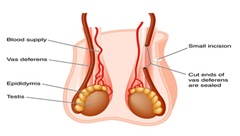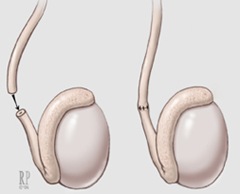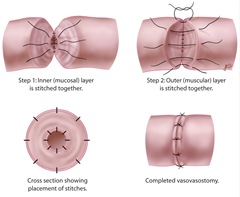In this blog, we will address and debunk some of the most common myths about vasectomy reversal to help you make informed decisions. Vasectomy reversal is a procedure that offers hope to many men seeking to restore their fertility after a vasectomy. However, numerous myths and misconceptions surround this topic, which can create confusion and misinformation.

Myth #1: Vasectomy Reversal is Not Effective
The Reality: High Success Rates
One of the most pervasive myths is that vasectomy reversal is ineffective. In reality, vasectomy reversal has a high success rate, particularly when performed by a skilled and experienced surgeon. Success rates can vary depending on factors such as the time elapsed since the vasectomy, the patient’s age, and overall health. Generally, success rates can range from 40% to over 90%.
Myth #2: Vasectomy Reversal is Extremely Painful
The Reality: Minimal Discomfort
While some discomfort is expected after any surgical procedure, vasectomy reversal is typically associated with minimal pain. Most patients report mild to moderate discomfort, which can be managed effectively with prescribed pain medications and over-the-counter pain relievers. Proper post-operative care, including rest and ice packs, can also help alleviate discomfort.
Myth #3: Vasectomy Reversal is a Simple Procedure
The Reality: A Complex Microsurgical Technique
Another common misconception is that vasectomy reversal is a straightforward and simple procedure. In truth, it is a complex microsurgical technique that requires a high level of precision and expertise. The procedure involves reconnecting the vas deferens using microsurgical instruments and techniques, often requiring a skilled surgeon with specialized training in microsurgery.
Myth #4: It’s Impossible to Achieve Natural Conception After Reversal
The Reality: Natural Conception is Possible
Many believe that natural conception is impossible after vasectomy reversal. However, the primary goal of the procedure is to restore the natural flow of sperm, allowing for the possibility of natural conception. Many couples achieve pregnancy naturally after a successful vasectomy reversal, without the need for assisted reproductive technologies.
Myth #5: Vasectomy Reversal is Always Covered by Insurance
The Reality: Variable Insurance Coverage
Insurance coverage for vasectomy reversal can vary widely. While some insurance plans may cover the procedure, others may not. It’s essential to check with your insurance provider to understand your coverage and any out-of-pocket costs. Additionally, some clinics may offer financing options to help manage the expenses associated with the procedure.
Myth #6: The Results are Immediate
The Reality: Patience is Required
Some believe that fertility is restored immediately after vasectomy reversal. In reality, it takes time for sperm to appear in the ejaculate and for fertility to be restored. The timeline can vary, but it generally takes several months to a year for sperm to return to the ejaculate and for natural conception to become possible.
Myth #7: Age Doesn’t Affect Success Rates
The Reality: Age is a Factor
Age can impact the success rates of vasectomy reversal. Younger men tend to have higher success rates due to better sperm quality and overall health. However, men of various ages can still benefit from vasectomy reversal, and many achieve successful outcomes. Consulting with a specialist can help determine the best approach based on individual circumstances.
Myth #8: Only Men Can Benefit from Vasectomy Reversal
The Reality: Both Partners Benefit
Vasectomy reversal is not just about restoring the male partner’s fertility. Both partners can benefit from the procedure, as it allows for the possibility of natural conception and expanding the family. The emotional and psychological impact of achieving pregnancy naturally can strengthen the bond between partners and bring shared joy.
Myths and Misconceptions About Vasectomy Reversal: Conclusion
Understanding the realities of vasectomy reversal can help dispel myths and misconceptions, allowing individuals and couples to make informed decisions. By consulting with an experienced urologist, you can gain accurate information and personalized guidance tailored to your unique situation.
For expert guidance on vasectomy reversal and to address any concerns or misconceptions, contact:
Yaniv Larish, MD
4 East 76th Street
New York, NY 10021
(646) 862-5500
Dr. Yaniv Larish is dedicated to providing comprehensive care and support to help you achieve your family planning goals. Schedule a consultation today to learn more about vasectomy reversal and the facts you need to know.



